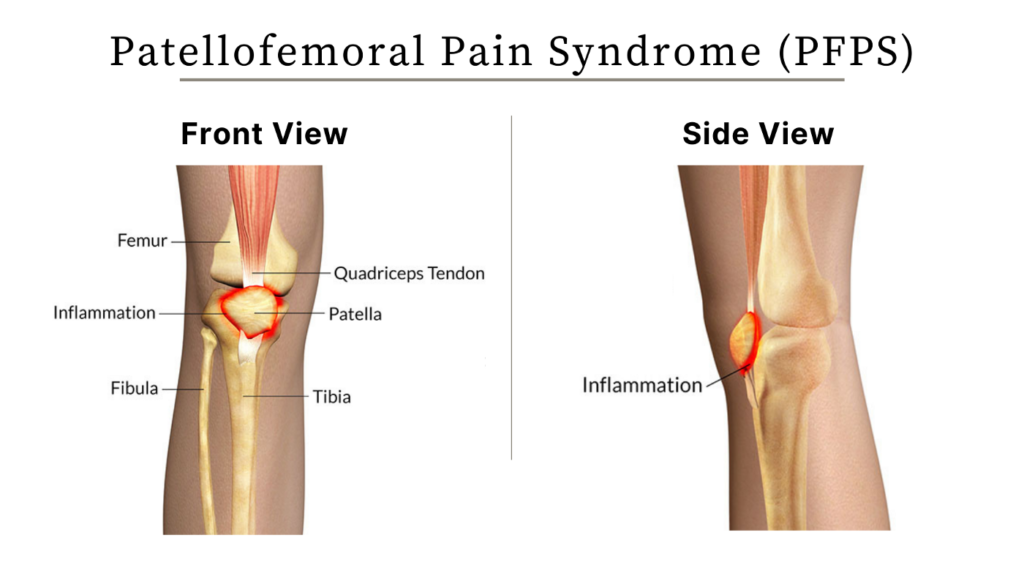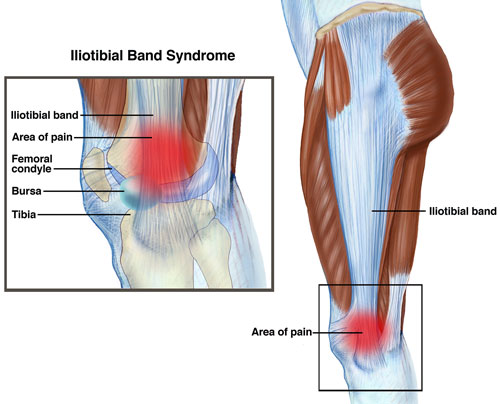Knee Pain
Knee pain is a common ailment that can be caused by a variety of factors, including injury, overuse, or degenerative conditions. Physical therapy can be an effective treatment option for many knee injuries and conditions, helping to reduce pain and improve function. Here are five specific knee conditions that OSR Physical Therapy treats, along with their treatment options:
Anterior Cruciate Ligament (ACL) Injury:

An ACL injury is a common knee injury, especially among athletes. An ACL injury often requires surgical repair, and physical therapy is an important part of the recovery process. The goal of physical therapy after ACL surgery is to restore full knee range of motion, improve knee stability, and regain strength and flexibility in the knee and surrounding muscles.
Here are some specific treatments that may be part of a physical therapy program for an ACL injury following surgery:
- Early Rehabilitation: Physical therapy may begin shortly after surgery with gentle range of motion exercises and modalities such as ice or heat to reduce swelling and pain. The therapist may also teach the patient how to properly use crutches or a brace to protect the knee during early stages of recovery.
- Strengthening Exercises: As the knee begins to heal, the therapist will work with the patient to improve strength and stability in the knee and surrounding muscles. Exercises may include straight leg raises, quad sets, hamstring curls, and calf raises.
- Range of Motion Exercises: It’s important to regain full range of motion in the knee after surgery. The therapist may use manual techniques, such as gentle stretching or joint mobilization, to improve knee flexibility and reduce stiffness.
- Plyometric Exercises: Once the knee has healed enough, the therapist may introduce plyometric exercises, which are high-impact exercises that involve jumping and landing. These exercises help to improve balance, coordination, and knee stability.
- Sport-Specific Exercises: For athletes who want to return to sports after surgery, the therapist may develop sport-specific exercises to improve the patient’s ability to perform the movements required for their sport. This may include running drills, cutting exercises, and jumping exercises.
- Balance Training: Balance training is an important part of ACL rehab as it helps to improve knee stability and reduce the risk of re-injury. The therapist may use balance boards or stability balls to challenge the patient’s balance and improve their proprioception.
Patellofemoral Pain Syndrome:

Patellofemoral pain syndrome (PFPS) is a common knee condition that causes pain in the front of the knee, around the kneecap. Physical therapy is an effective treatment option for PFPS, and the goal is to reduce pain and improve knee function through a combination of exercises, manual therapy, and education.
Here are some specific treatments that may be part of a physical therapy program for PFPS:
- Strengthening Exercises: Strengthening exercises can help to improve the stability of the knee joint and reduce pain. The physical therapist may recommend exercises such as quad sets, hamstring curls, calf raises, and hip abductor exercises.
- Stretching Exercises: Tight muscles in the legs, such as the hamstrings and quadriceps, can contribute to PFPS. The physical therapist may recommend stretching exercises to improve flexibility in these muscles and reduce pain.
- Patellar Taping: Taping the kneecap can help to reduce pain and improve alignment of the patella. The physical therapist may use kinesiology tape or McConnell taping techniques to achieve this.
- Manual Therapy: Hands-on techniques such as massage, joint mobilization, and soft tissue mobilization can help to reduce pain and improve knee function.
- Activity Modification: Activities such as running, jumping, or squatting can exacerbate PFPS. The physical therapist may recommend modifications to these activities, such as reducing the intensity or frequency, to help reduce pain and allow the knee to heal.
- Education: The physical therapist can provide education on proper body mechanics and posture, as well as tips for reducing pain during daily activities.
Meniscus Tear:

A meniscus tear is a common knee injury that can cause pain, swelling, and difficulty moving the knee. Physical therapy is often a key component of treatment for a meniscus tear, and the goal is to reduce pain and improve knee function through a combination of exercises, manual therapy, and education.
Here are some specific treatments that may be part of a physical therapy program for a meniscus tear:
- Strengthening Exercises: Strengthening exercises can help to improve the stability of the knee joint and reduce pain. The physical therapist may recommend exercises such as quad sets, hamstring curls, calf raises, and hip abductor exercises.
- Range of Motion Exercises: The physical therapist may recommend exercises to improve range of motion in the knee joint, such as heel slides and wall slides.
- Balance and Proprioception Exercises: These exercises can help to improve balance and coordination in the knee joint, which can help to reduce the risk of further injury. Examples of balance and proprioception exercises include single-leg standing, balance board exercises, and agility drills.
- Manual Therapy: Hands-on techniques such as massage, joint mobilization, and soft tissue mobilization can help to reduce pain and improve knee function.
- Activity Modification: Activities such as running, jumping, or squatting can exacerbate a meniscus tear. The physical therapist may recommend modifications to these activities, such as reducing the intensity or frequency, to help reduce pain and allow the knee to heal.
- Education: The physical therapist can provide education on proper body mechanics and posture, as well as tips for reducing pain during daily activities.
In some cases, surgery may be necessary to repair or remove a torn meniscus. In these cases, physical therapy may be recommended after surgery to help the patient regain strength, range of motion, and function in the knee joint.
Osteoarthritis:

Osteoarthritis (OA) of the knee is a common form of arthritis that causes pain, stiffness, and reduced range of motion in the knee joint. Physical therapy is an effective treatment for osteoarthritis of the knee, and can help to improve knee function, reduce pain, and increase overall quality of life.
Here are some specific treatments that may be part of a physical therapy program for osteoarthritis of the knee:
- Strengthening Exercises: Strengthening exercises can help to improve the stability of the knee joint, reduce pain, and improve overall function. The physical therapist may recommend exercises such as leg presses, hamstring curls, calf raises, and hip abductor exercises.
- Range of Motion Exercises: The physical therapist may recommend exercises to improve range of motion in the knee joint, such as heel slides and wall slides.
- Aerobic Exercise: Aerobic exercise such as walking, biking, or swimming can help to improve cardiovascular health, reduce pain, and improve knee function.
- Aquatic Therapy: Aquatic therapy, which involves exercising in a pool, can help to reduce pain and improve joint mobility, especially for those who find land-based exercises too painful.
- Weight Management: Excess weight puts additional strain on the knee joint, so maintaining a healthy weight can help to reduce pain and improve overall function.
- Assistive Devices: The physical therapist may recommend assistive devices such as knee braces or shoe inserts to help reduce pain and improve knee function.
- Education: The physical therapist can provide education on proper body mechanics and posture, as well as tips for reducing pain during daily activities.
Iliotibial (IT) Band Syndrome:

Iliotibial (IT) band syndrome is a common overuse injury that causes pain on the outside of the knee. Physical therapy can be an effective treatment for IT band syndrome, and can help to reduce pain, improve mobility, and prevent further injury. Here are some specific treatments that may be part of a physical therapy program for IT band syndrome:
- Stretching: The physical therapist may recommend stretching exercises to improve flexibility and reduce tension in the IT band. These may include IT band stretches, hip stretches, and quad stretches.
- Strengthening Exercises: Strengthening exercises can help to improve the stability of the hip and knee joints, reducing strain on the IT band. The physical therapist may recommend exercises such as hip abductor exercises, single-leg squats, and step-ups.
- Foam Rolling: Foam rolling can help to reduce tension and adhesions in the IT band, reducing pain and improving mobility.
- Taping: The physical therapist may use taping techniques to support the knee and reduce tension on the IT band during activity.
- Gait Analysis: The physical therapist may analyze the patient’s gait to identify any biomechanical issues that may be contributing to the development of IT band syndrome.
- Education: The physical therapist can provide education on proper warm-up and cool-down techniques, as well as tips for reducing pain during daily activities.
- Activity Modification: The physical therapist may recommend modifications to the patient’s exercise routine to reduce strain on the IT band while allowing for continued activity.
In addition to these specific conditions, physical therapy can also be effective in treating general knee pain and stiffness. Treatment may include exercises to improve range of motion and strength, manual therapy, and modalities such as heat or ice.
At OSR Physical Therapy, our experienced physical therapists work with patients to develop individualized treatment plans based on their specific knee condition and needs. Contact us to schedule an evaluation and find out how physical therapy can help you recover from knee pain or injury.
Contact Us
« Back to Conditions We Treat List





